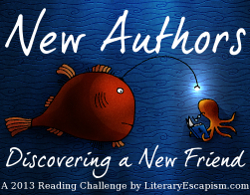Source: Historical Fiction Virtual Book Tours
Hardcover, 277 pages
I am an Amazon Affiliate
Gracianna by Trini Amador is based on true events of the author’s great-grandmother’s life. Gracianna is headstrong and determined to achieve her dream of going to America no matter who she leaves behind. High in the Pyrenees Mountains among her Basque people along northeastern Spain and southwestern France, women tend to be strong, persevering against all odds, while traditionally, men run in fear or have wanderlust. Amador chooses a third-person, seemingly omniscient narrative in which readers will see and hear the actions and reactions of Gracianna, Constance, and Juan. Unfortunately, this method lends itself to more telling than showing, leaving the reader at a distance from the characters.
“Once she decided to engage with anyone on a given subject, they would become transfixed by her confidence, and the grasp and depth of her knowledge. Her sureness came from her strong core.” (page 7)
While the 1940s through WWII is a tumultuous period full of tension and anguish, readers are likely to be pulled in and out of the story as the points of view shift even within chapters between main and minor characters. From the French Resistance to the concentration camps in Auschwitz, Amador describes the conditions with aplomb, though there are moments where prisoners are asked by newcomers where they have landed in a way that makes it seem like they’ve arrived at a hotel or paradise resort — thus shifting the tone and diminishing the frightening atmosphere readers may expect.
Through the novel, Amador relies on sometimes obvious, and at other times unnecessary headline-like title breaks in the middle of chapters that often foreshadow the action to come. Readers could find these distracting. Gracianna is a character that readers want to love and cheer on throughout the novel, but the unusual structure makes that difficult.
In many ways, the author’s style is too focused on Gracianna’s cultural compass and how it guides her actions and decisions, and does little to shed light on her emotional losses and connections with others. The relationship she has with her sister is tough to get a handle on given the time lapse between when she last sees her in Basque and when Constance shows up in Paris, and her relationship with her husband seems one-sided, as though she is pressured into marriage by the war. Gracianna by Trini Amador pays homage to the author’s heritage and great-grandmother, weaving a story of fact and fiction that leaves readers looking for more dynamic characters they can connect with.

Trini Amador vividly remembers the day he found a loaded German Luger tucked away in a nightstand while wandering through his great-grandmother’s home in Southern California. He was only four years old at the time, but the memory remained and he knew he had to explore the story behind the gun. This experience sparked a journey towards Gracianna, Amador’s debut novel, inspired by true events and weaving reality with imagination. It’s a tale drawing from real-life family experiences. Visit him on Facebook and Twitter.




 About the Author:
About the Author:

 About the Author:
About the Author: About the Author:
About the Author:
 About the Author:
About the Author: About the Author:
About the Author: About the Author:
About the Author:
 About the Author:
About the Author:

 About the Author:
About the Author:
 About the Author:
About the Author:


